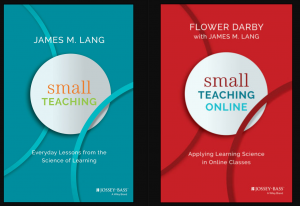There is a high degree of overlap in online and face to face best practices. In the following presentation, I use the Six best practice for learning as outlined by Michelle Miller in the book, “Minds Online.” She draws from the following best practice lists to create a comprehensive 6 best practices that could be applied to online or face to face classes:
Ambrose, S. A., Bridges, M. W., DiPietro, M., Lovett, M. C., & Norman, M. K. (2010). How learning works: Seven research-based principles for smart teaching. John Wiley & Sons. Retrieved from https://xa.yimg.com/kq/groups/50920643/1355492245/name/How+Learning+Works.pdf
American Distance Education Consortium (ADEC). (2016) Five best practices. Retrieved from http://adec.edu/resources
Boettcher, J. V. (2006). Ten best practices for teaching online: quick guide for new online faculty. Retrieved from http://damitamajetteomde610.com/otte-and-banke.php
Chickering, A. W., & Gamson, Z. F. (1987). Seven principles for good practice in undergraduate education. AAHE bulletin, 3, 7. Retrieved from http://eric.ed.gov/?id=ED282491
The 6 Best Practices for Learning are:
- Peer to Peer Interaction
- Active Student Engagement in Learning
- Emphasis on Practice and Student Effort
- Personalization to the Individual Student
- Variety
- Emphasis on Higher Thought Processes
You can download a PDF copy of the powerpoint used in the presentation here: The 6 Best Practices of Online Learning – Jason Johnston. Please drop me a line if you have any questions or comments!



